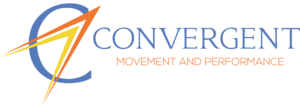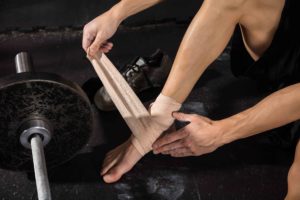Ligaments

Ligaments work to connect one bone to another bone at a joint, and their primary function is to help maintain stability between those bones at the joint.
Each ligament has a job of preventing the bones at the joint from moving excessively in a specific direction, therefore helping to prevent subluxation (partial dislocation) and full dislocation
Ligament Stressors
There are normal and abnormal stressors that result in different outcomes on ligaments. Unlike muscles, ligaments are not contractile tissues, meaning they cannot contract and shorten on demand. Instead, they are generally a set length, and are stressed when they are stretched and further lengthened.
The way by which ligaments adapt to stressors is dependent on the nature of the stressor, as well as the recovery process post stressor.
Please remember, challenging obstacles from which you are able to fully recover result in a good stress known as Eustress. On the other hand, obstacles deemed threatening and/or obstacles from which you are unable to fully recover will result in a negative stress known as Distress.
Distress: A Dangerous Threat to Ligaments
Negative and potentially painful stress may occur when stressors placed on a ligament exceed that of what the ligament can handle.
Excessive overstretching of a ligament may result in ligament injury often referred to as a “sprain” or “tear.”
The occurrence of a ligament injury may reduce stability at a joint due to an impaired bone-to-bone connection. This occurrence has the potential to result in subsequent joint hypermobility (excessive motion at a joint that may still be controlled) or instability (severely excessive motion at a joint that can no longer be controlled).
There are 3 primary grades of ligament injury, which are accompanied by the following signs and symptoms:
Grade 1 (first-degree) tear
- Microtearing of the ligament
- Mild pain that begins within the first 24 hours post injury
- Mild swelling
- Local tenderness with palpation/touch
- Pain reproduced when the injured ligament is stretched
- ***There is no noticeable change in joint mobility
Grade 2 (second-degree) tear
- Mild-moderate tearing of the ligament (partial tear)
- Moderate pain that requires stopping the activity
- Mild-moderate swelling
- Significant increase in pain with palpation/touch
- Significant increase in pain when the injured ligament is stretched
- Noticeable increase in joint mobility (hypermobility)
Grade 3 (third-degree) tear
- Near complete or complete tear
- Severe pain
- Moderate-severe swelling
- May notice a defect with palpation
- Stressing tissue is often painless
- Significant and uncontrollable increase in joint mobility (instability)
Resolve What's Holding You Back: Restoration and Recovery
Upon injury and distress, ligaments undergo a process of healing consisting of the Inflammatory phase, Proliferation phase, and Remodeling phase.
Please read the following article to understand how best to manage your ligament injury during each of the 3 phases of healing.
Eustress: A Healthy Challenge for Ligaments
Ligaments are stressed appropriately and in a healthy manner when they are stretched within the limits of what the ligament can handle
For instance, many times when a joint is “tight” or “stiff,” Manual Physical Therapists will perform a “joint mobilization” where an appropriate stretch is placed on the joint and surrounding tight ligaments in order to improve the overall mobility of the joint.
Ligaments are loaded and stressed often throughout the day with everyday activities that cause motion at the joints. With proper loading, the ligament length will either remain the same or increase slightly, but not to the point of creating excessive joint mobility or instability.
Time to Move Forward: Preparation and Fitness
Improving fitness is among the most effective approaches addressing the ‘preparation’ aspect of performance enhancement. Preparing for maximal performance through fitness involves optimizing the balance between movement quality, strength, endurance, and speed.
Focusing on movement quality prepares you to perform activities in a manner that avoids excessive joint movement, ligament stretching, and instability.
Focusing on strength prepares your muscles to contribute more to joint stability, thereby reducing the demands on the ligaments.
Focusing on endurance improves your ability to maintain optimal movement quality for prolonged periods of time. After all, fatigue will often reduce the ability of your muscles to assist in stabilizing the joint. A reduction in muscular contribution increases the demands placed upon your ligaments.
Focusing on speed improves how quickly your body is able to react to outside stressors and forces while maintaining optimal movement quality. Ligament injuries such as sprains most often occur during sudden changes in joint movement when your muscles are not fast enough to stabilize the joint.
TAKE ACTION!
- If you believe you have undergone a ligament-related injury, be sure to consult with a licensed healthcare provider specializing in this field in order to receive a definitive diagnosis rather than attempting to “guess and test.”
- Please make sure you clearly understand the 3 phases of healing. I am always available if you have any questions.
- As you enter the Proliferation and Remodeling phases of healing, focus your efforts on developing movement control through muscular activation in order to improve stability of the affected joint and reduce stress on the ligament.
- It is time to begin the ‘preparation’ aspect of performance enhancement as soon as sufficient restoration of any ligament-related distress has occurred. When ready, begin implementing the information presented in this article, as well as the remainder of the content within the “Convergent Path to Performance,” in order to maximize Eustress while minimizing Distress.
Summary
Ligaments play multiple roles within your body, and therefore undergo a multitude of stressors throughout the day. The key is to remember that you hold significant influence over the health of your ligaments. By understanding how ligaments are stressed and recover, you will have the tools necessary to maximize positive adaptation while reducing the occurrence of distress and injury.

Dr. Eugene Ketselman PT, DPT, Cert. MDT, CSCS
Dr. Eugene Ketselman is a licensed Physical Therapist, Certified Strength and Conditioning Specialist, Performance Coach, and owner of Convergent Movement and Performance; Home of where Physical Therapy, fitness, and performance training converge! Dr. Ketselman's mission is to help motivated athletes and active adults excel in their passions by maximizing physical performance and reducing setbacks from pain and injury.
Here at Convergent Movement and Performance, we practice what we preach. You know we are a good match for one another as soon as you find yourself relating to the content we provide. Be sure to click below to learn more.
Do you have specific questions that aren’t answered on this website?
Click below
Does pain, weakness, or exhaustion prevent you from reaching your FULL potential while performing the activities you love?
Click below
Do you love what you’re seeing, but still aren’t sure if you can make the commitment?
Click below
Contact Us
Convergent Movement and Performance serves out of Northern – Central New Jersey, conveniently located to those that live, work, and travel in the nearby towns of Warren, Bridgewater, Martinsville, Watchung Hills, Bedminster, Basking Ridge, Bernardsville, Chatham, Westfield, and Piscataway within Somerset, Morris, Union, and Middlesex counties, NJ.

